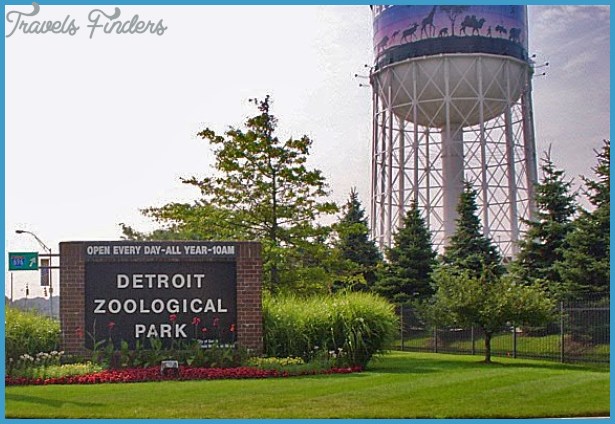The New Deal, World War II, and the Postwar Boom Michigan
Even before the Depression was over, employers again began to recruit Mexican-origin workers to the state. The New Deal helped to resuscitate the sugar industry in Michigan by guaranteeing prices and instituting new payments to sugar producers. In addition to its provisions for farmers, the New Deal began to defend the freedom from want for a broad section of the U.S. working class, including industrial workers in Detroit. Some rural workers made attempts to win the same rights. In 1935 eastern European sugar workers and members of the Liga de Campesinos y Obreros together successfully struck for higher wages in Blissfield. In 1937 labor and child protection activists within the Roosevelt administration tied sugar subsidies to minimum wages for all farmworkers, and eight-hour days for children over 14 which was the minimum age for a migrant worker to be legally employed) working in migrant camps. But no permanent agency was put in place to enforce the rules. In response to the strikes and limited federal regulations, Michigan contractors paid truckers by the head to load up workers in San Antonio and smuggle them across state lines into Michigan. By the end of the 1930s Michigan manufacturers increasingly relied on few San Antonio firms, run by Mexican Americans, to contract and transport laborers to the state. Texicans, as local farmers called them, constituted about one-third of the workforce in Michigan agriculture throughout the Depression, working alongside white and black southern migrants.
New Dealers never guaranteed rights to social security, minimum wages, safe working conditions, unemployment insurance, and collective bargaining to these farmworkers. The state of Michigan imposed its own regulations on migrant labor in 1938 and 1939. These, however, were designed to protect Michiganders from the hazards of interstate migration rather than to benefit the migrants themselves. The state of Michigan sent Health Department officials to San Antonio during the spring contracting season, where they subjected potential migrants to inspections. Rather than offering treatment to the sick, they simply barred them from coming to Michigan. Only a few municipal governments in Michigan created clinics to provide medical services to migrants, but those clinics quickly ran out of money. In the early 1940s volunteers from local Protestant churches formed the Michigan Migrant Ministry to provide basic services and preach the Gospel in migrant camps. They sought to welcome workers on a temporary basis only, not to integrate them into Michigan society as full citizens.
The flow of migrant farmworkers to Michigan continued to grow in the 1950s and 1960s, bringing in as many as 106,000 seasonal workers in the peak summer
of 1957. Many of these workers came through official government programs. Beginning in 1942 the federal government provided laborers to Michigan employers directly. Michigan was one of the states that received the most workers from the Bracero program as many as 15,000 in the 1957 season.4 During World War II, the War Manpower Commission also sent migrants from Arkansas, Missouri, and Texas to Michigan. Although the government served as a labor contractor, it made little attempt to regulate working conditions for any of these migrants. Braceros working for a railroad company in Ypsilanti, for instance, complained many times to the War Manpower Commission about the poor quality and scarcity of food in their boxcar camp. They received no attention until their complaint reached both the Mexican consulate and labor activist Ernesto Galarza, who visited the state in 1945.
Children of all ages still worked on Michigan farms, and few migrant children had access to schools. Diphtheria outbreaks continued in migrant camps, and tuberculosis was widespread. When federal officials finally decided to regulate this labor market in the early 1950s, they defined the problem as an immigration control issue, not as a matter of labor and human rights. With a new nationwide outburst of racist anti-immigrant hysteria, the government sent a fleet of Army C-150s into the Midwest to round up undocumented workers and ship them to the Mexican border. This new repatriation campaign was called Operation Wetback.
That is not to say that migrants who moved between Texas and Michigan in the 1940s and 1950s were wholly docile, or that all Michigan employers offered the same subhuman treatment. When conditions on particular farms were bad enough, migrants often abandoned them mid-season. When rumors spread about bad employers in one northern state, migrants in Texas contracted to go to others. For instance, when Michigan health officials began their inspections in Texas, many migrants began to boycott Michigan labor contractors. Soon employers began to complain, and the state gave up on the inspections. On the other hand, migrants who found reasonable conditions on a particular farm often returned year after year, using the regular work in Michigan as a way to improve their lives in Texas. From 1940 to 1950 Candido Delgado, a bricklayer in San Antonio, came every summer with his family to work on the same Michigan beet farm.
He could have worked the summer through in San Antonio, but he preferred to bring his family north. You see, he explained in 1950, we have got a lot of things to buy, and of course I figure the kids might have a house sometimes, so I just come here to make a little more. After paying back the sugar company for travel and living expenses, he and his three children ended the 1949 season with 1,500 dollars saved. Union membership in Texas would have made the trip unnecessary, but the bricklayer’s union would not have him, so he chose to come to Michigan.


















